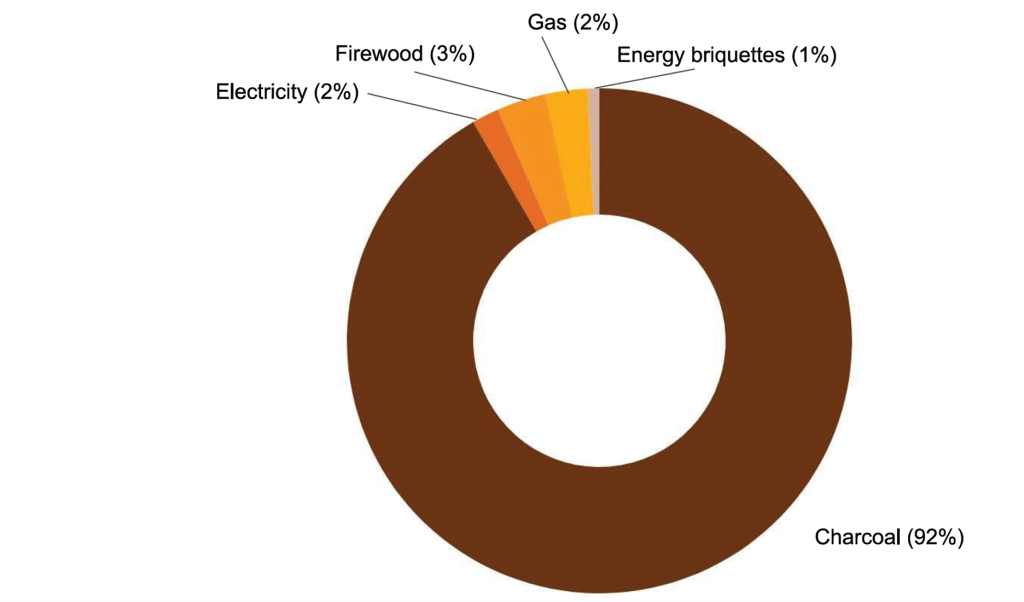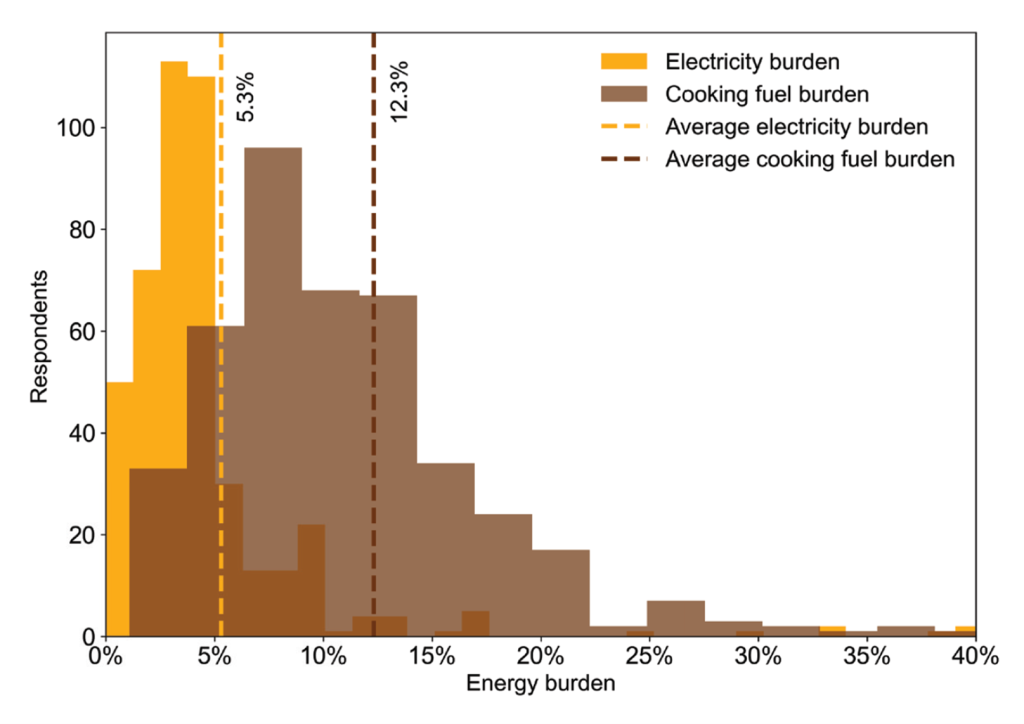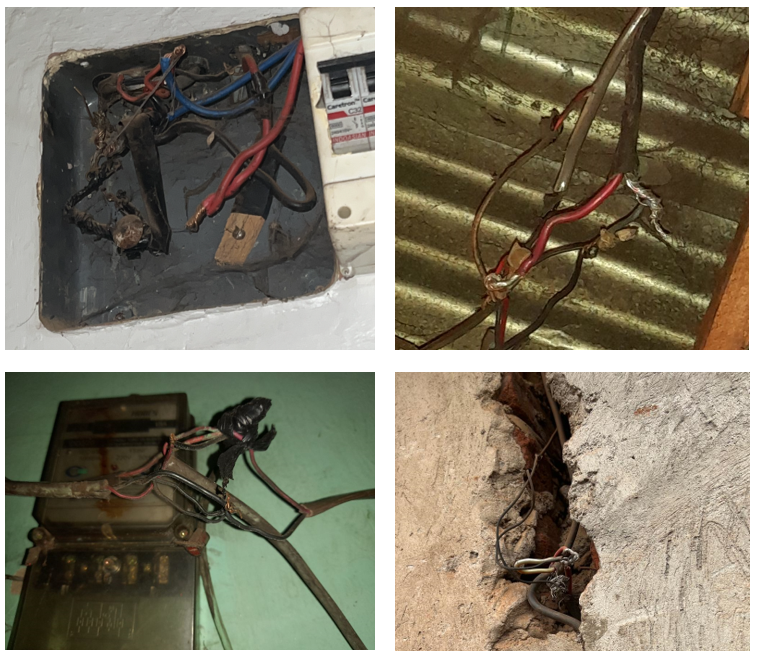- Date
- 8th February 2024
- Categories
- Electric Cooking, Informal Settlements, Uganda
By Jessica Kersey (University of California, Berkeley), Civian Massa (University of Massachusetts, Amherst), Judith Mbabazi (Makerere University), Paul Kyoma (Makerere University), June Lukuyu (University of Washington), Waiswa Kakaire (ACTogether Uganda), Bulenza Sirezi (ACTogether Uganda), Laura H. Kwong (University of California, Berkeley), Jay Taneja (University of Massachusetts, Amherst), Will Clements (Gamos Ltd.), Simon Batchelor (Gamos Ltd.)

Introduction
Accelerating the uptake of clean fuel sources for cooking is an urgent international priority under Sustainable Development Goal 7 to “ensure access to affordable, reliable, sustainable and modern energy for all”. The link between the use of polluting fuels for cooking and negative health, livelihoods, and environmental outcomes – particularly for women and children – has been extensively documented. What is less clear is how the trajectories of global cooking fuel transitions will change as the Global South continues to rapidly and inequitably urbanize.
Poverty is urbanizing on the African continent. Over 60% of Africa’s 560 million urbanites live in informal settlements that are overcrowded, lack water and/or sanitation, or have insecure land tenure, among other factors defined by the United Nations. Existing research shows that energy transitions among informal populations are slow and uneven, with many continuing to rely on fuels like firewood and charcoal to meet their daily cooking needs. Because of the near-universal coverage of grid networks in urban areas, electric cooking (eCooking) is being increasingly seen as a viable transition fuel for these communities.
The Global Electric Cooking Coalition (GeCCo), launched at COP28 by its anchor partners, the Global Energy Alliance for People and Planet (GEAPP), Energising Development (EnDev), Sustainable Energy for All (SEforALL), and Modern Energy Cooking Services (MECS) Programme, is a major advancement in global efforts to scale eCooking adoption. GeCCo has announced the ambitious objective of transitioning at least 10% of the population to eCooking in at least 10 countries across sub-Saharan Africa, Asia and Latin America, and the Caribbean, by 2030. GeCCo is part of a larger groundswell of efforts to promote eCooking, such as ASCENT by the World Bank and IRENA’s launch of a review of e-Cooking potential at COP28. GeCCo is set to unlock substantial resources for eCooking efforts, but the big question is: Who will benefit from eCooking?
eCooking in Uganda
eCooking is a nascent possibility that is gaining traction in Uganda, signaling a major strategic shift in efforts to promote clean cooking in East Africa more broadly. The Government of Uganda and the utility Umeme have made significant progress in building a strong enabling environment for eCooking – a move which is intended to leverage Uganda’s underutilized hydropower generation capacity while also alleviating the deforestation impacts of charcoal use. So far, these efforts have focused on strengthening supply chains and promoting uptake of highly-efficient electric cooking devices, for example through a pilot project to distribute 1,500 electric pressure cookers to households in Kampala.
An abrupt ban on charcoal trade in May 2023 disrupted the livelihoods of the energy supply chain from local charcoal traders to boda boda drivers in Northern Uganda. Policies like these often force those engaged in this type of low-wage and dangerous work to operate more secretively, making their livelihoods more precarious. These experiences and a growing body of energy justice literature highlight the risks of overlooking inclusivity in policy-making. They underscore that a just energy transition should focus on reshaping energy habits without jeopardizing the well-being of those who depend on existing systems.
In Kampala, 62% of the population lives in informal settlements occupying 25% of the city’s total land area. These communities are home to some of Kampala’s most vulnerable residents, with an estimated 73% earning below the national poverty line of $1.90 per person per day. Though 95% of the population is connected to the electricity grid, 92% rely on charcoal as their primary fuel source for cooking (see Figure 1). Cooking is an enormous expense to households and businesses, who in our surveys reported spending on average nearly 18% of their monthly income on energy (Figure 2). For context, the World Bank Multi-Tier Framework defines affordable energy as 5% or less of monthly income.


In these settings, energy-efficient eCooking is a promising way to decrease (disproportionately female) illness and deaths and reduce the financial burden of energy – particularly as charcoal prices are on the rise. However, early efforts to promote eCooking are yet to target this demographic. An eCooking tariff introduced by the regulator in 2021 based on the national average consumption provides a discounted electricity rate for monthly consumption between 81 and 150 kilowatt-hours (kWh). The average monthly consumption in informal settlements, which is on average 20 – 30 kWh precludes a large proportion of informal settlement dwellers from benefiting from this tariff 1.
Therefore, to prevent well-intentioned policies from disenfranchising low-income and informally settled populations and further exacerbating urban inequality, eCooking interventions and solutions should also be tailored to these communities. As echoed by community members in discussions, public forums, focus groups, and interviews conducted by Spotlight Kampala, we risk creating a reality where “[cooking with] electricity is for the rich” (Source: Interview by Judith Mbabazi with a female restaurateur).
What is unique about the eCooking needs of informal and low-income communities in Kampala?
Urban informality and poverty are intersectional challenges that exist along the spectrum. Not all low-income residents live in informal settlements, and not all informally settled people are low-income. With this in mind, the following are challenges identified through fieldwork in 25 informal communities in Kampala 2. Many of these challenges can be generalized to East Africa and urban Africa more broadly.
Low and unpredictable incomes
It is difficult for households in informal communities to save enough money to purchase an eCooking appliance, or to afford to operate one once purchased. Earnings in low-income households are low, volatile, and expenses tend to be planned daily. The cost of an electric pressure cooker ranges between $52 and $131 – a large expense for a population that our data shows earn on average $180 per household per month. The average residential tariff in Uganda is around $0.22 per kilowatt-hour, compared to around $0.15 and $0.14 in East African neighbors Kenya and Tanzania, respectively 3.

- Limited autonomy
Given the substantial legal and financial barriers to obtaining a formal electricity connection in informal communities, most households access electricity through an intermediary like a landlord, neighbor, or a local electrician (known locally as a kamyufu). The terms of these arrangements are informally negotiated but often include explicit restrictions on the types of appliances that may be used. This has emerged as a strategy to control expenditures, particularly on connections shared between multiple users, where it is not possible to measure actual individual consumption. Many research participants said that eCooking appliances were explicitly not allowed per the terms of their current service arrangements.
- Poor power quality
Power quality in informal settlements is chronically worse than in nearby formal settlements. Within informal settings, power quality varies enormously based on how a user is connected. Users who share a connection experience significantly worse power quality. This includes periods of sustained low voltage, high voltage spikes, and more frequent and prolonged outages. This not only limits the use of electric cooking appliances but can prematurely damage them.
- Overburdened infrastructure
The high population density in informal settlements places immense pressure on the electrical infrastructure. Transformers serve many more users than they are designed for, contributing to the power quality challenges noted above. In addition, many users share a meter and a common electrical circuit that may not be appropriately sized for high-draw appliances like electric pressure cookers. Rapid eCooking adoption is likely to exacerbate these challenges and, in doing so, may jeopardize the stability of the distribution grid.
- Wiring conditions and safety
Improvised wiring with substandard materials poses a significant risk in these informal communities, which could be exacerbated by eCooking appliances. During the connection process, utility personnel inspect household wiring to ensure it complies with minimum safety standards. However, users often then extend their wiring to other structures, often with secondhand or undersized materials which are more affordable. Shocks, sparks, and burnt wiring are daily realities that provoke anxiety around electrical safety, particularly when small children are in the household. Many women restrict eCooking activities to times when they can closely supervise or when the children are not present.
Cooking eventually wears out the wires. (When people are using electricity to cook) they complain of constant sparking from their wires.
A Kamyufu interviewee.
- Misconceptions
There are a number of misconceptions around eCooking in informal contexts, such as the safety of consuming food cooked with electricity. Other misconceptions centered around the efficiency of these appliances, and fear that they would dramatically increase electricity consumption and hence costs. While these are addressable through public awareness campaigns, these communities also tend not to be as accessible through standard social media and other digitally-enabled channels.
There’s a belief that cooking with electrical appliances causes cancer so people fear it, especially making tea with electricity. Someone can tell you ‘You’ve made me tea with a percolator (electric kettle)! I won’t take it! Diseases are spreading from this!’
A Female Focus Group participant.
- Gender norms and limitations in women’s decision-making abilities
Women and girls bear the primary responsibility for meal preparation, and thus the impacts of polluting fuels and air pollution. During Spotlight Kampala’s fieldwork, in focus groups, interviews, and everyday interactions, women described how gender norms sometimes constrain their ability to make decisions related to cooking fuel use. For example, several women said that their husbands would not allow them to cook food with electricity or to use household funds to purchase an electric pressure cooker. Women-headed households also expressed that they felt they had less power within negotiations with kamyufus, for example. However, women also bear a great deal of influence within their homes, businesses, and communities, and the agency to be active leaders in promoting a cleaner and more equitable local energy transition.

Policy recommendations for a pro-poor eCooking transition
Research has demonstrated that eCooking with efficient appliances such as Electric Pressure Cookers can save around 50% on cooking fuel costs compared to charcoal, can cater to over 80% of traditional menus, and is quick and easy (see the Kenyan eCookbook or Ugandan eCookbook and mythbusting eCooking Shamba Shape Up segments). Significant progress has been made toward developing financing mechanisms like asset financing, pay as you go, and leveraging carbon finance to reduce the upfront cost of eCooking appliances.
Informal businesses and households have already adopted eCooking appliances like electric kettles and cooking coils to varying and uneven extents, demonstrating a demand for eCooking solutions. Consequently, eCooking in informal urban communities may be poised to rapidly expand if the extant infrastructural, financial, and policy barriers can be addressed. In recognizing the unique barriers and drivers of eCooking in informal low-income urban households, we call for the following:
- Emphasizing electric wiring and safety
Interventions in urban informal settlements must ensure that households are equipped with adequate wiring capable of safely accommodating the draw of eCooking appliances. Ready boards have been tested in informal communities in the past but were not well-received by these communities because of their limited capabilities. Solutions should focus on providing the resources for wiring installations (and accompanying financing options) that meet minimum safety standards to support eCooking but are suited to the needs and aspirations of the community.
- Disaggregating informal and low-income communities from the urban average in data and statistics
There is a recognized data gap in informal settlements. Terms like “data shadow” or the “missing millions” have described a reality where informal communities are routinely and structurally omitted from or underrepresented in official statistics. Even where they are captured, the specificities of these communities are often obscured when statistics are averaged across urban areas. A ‘one-size-fits-all’ approach in interventions will privilege higher-income groups and overlook the most vulnerable communities.
Policies and programs could seek to prioritize the most vulnerable communities by specifically targeting them, instead of implicitly assuming that the benefits will trickle down. This should start with more extensive data-gathering and survey exercises. Participatory approaches are necessary to meaningfully and appropriately engage communities in collaborative planning processes. Community-based organizations (like the National Slum Dwellers Federation of Uganda and ACTogether in Kampala) have strong data collection capacities and could be engaged. Geospatial analysis can also aid in evaluating existing data sources – for example, to analyze the consumption and payment data collected utilities.
- Leveraging existing community channels and supply structures
Implementers of eCooking interventions should seek to work through mediums and channels that are known and comfortable to these communities. This includes understanding that digital communication has limitations in this context. Local Council offices, community-based NGOs, and places of worship could be more effective channels to raise awareness and mobilize community engagement. demonstrations and trials could help informal urban communities become familiar with electric pressure cookers and learn about their benefits.
Landlords act as supply intermediaries for 24% of informal users, and arrangements are most commonly based on the number and types of appliances tenants use Therefore, landlords could prevent the use of electric pressure cookers on their premises. ECooking interventions that target traditionalsupply structures (a single registered user with a pre-paid meter), could also cater to tenants who receive electricity services through informal arrangements by offering complementary incentives to the landlords.
- Appropriately engaging and incentivizing informal electricians
Local electricians are important actors in the electricity supply chain in informal communities. They are best known for providing unmetered (e.g. illegal) connections, and currently act as supply intermediaries for an estimated 15% of users. With many having worked for utility companies or trained under licensed electricians, they are relatively skilled and trusted within their communities. This trust positions them uniquely to advocate for and educate on eCooking.
Though counterintuitive, it is possible that introducing electric pressure cookers could reduce power theft. We found that households with unmetered connections were more likely to already cook with electricity, but do so usually through low-efficiency resistive technologies like cooking coils. Electric pressure cookers could offer a significant improvement in efficiency and reduce non-technical losses.
- Meaningfully centering gender considerations
It is undebatable that gender is an intrinsic and critical aspect of efforts to transition urban cooking practices towards cleaner fuel sources. The eCooking community should research existing gender dynamics within households and with supply intermediaries, as well as women’s decision-making abilities to inform programs and interventions that seek to work within and influence these gendered power structures. eCooking
Change is coming rapidly in the Ugandan electricity sector. Umeme’s electricity distribution concession is ending in 2025, and the timing and nature of the handover plan to the Uganda Electricity Distribution Company Ltd. (UEDCL) is still relatively unclear. Amid this, the Ministry of Energy and Mineral Development’s progressive and proactive stance on promoting clean cooking with electricity is set to position Uganda as a leader in the eCooking transition in East Africa. We hope to see inclusivity incorporated as a central theme of future efforts so that the benefits of eCooking can be realized by those who most need them.
***************************************************************************************************************
1 A program to meter consumption after the introduction of eCooking is being conducted so that the regulator can revisit and refine the tariff structure and limits.
2 Our methods include interviews, surveys, remote power quality monitoring, remote energy consumption monitoring, wiring inspections, and focus groups, and took place from October 2022 to May 2023.
3 Further, although there is a lifeline tariff which heavily discounts electricity use up to 15 kWh, the majority of users cannot fully benefit from this. Most (66%) users in informal settings share an electricity meter. Because their consumption is cumulative, the total cost is higher than it would be if all were consuming on separate meters.